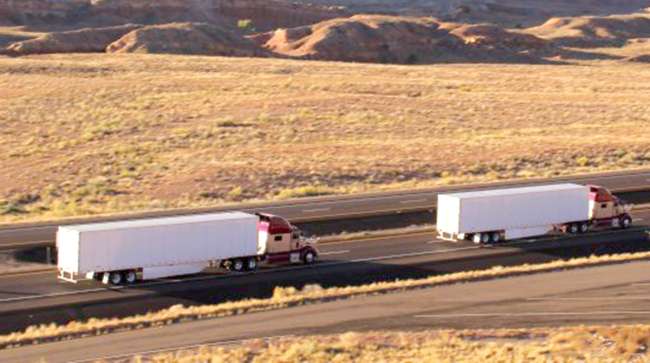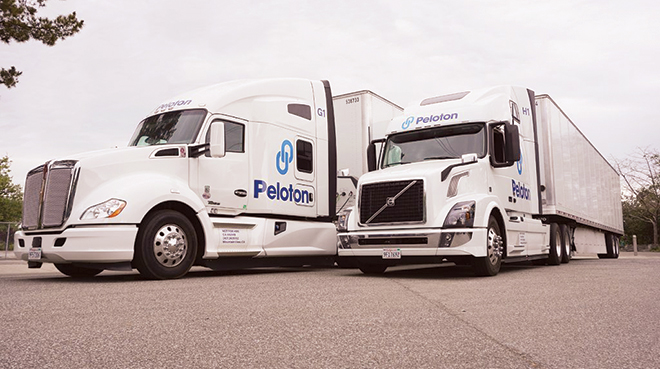Senior Reporter
Peloton to Launch Platooning by End of 2018

LONG BEACH, Calif. — Platooning developer Peloton Technology will have its two-truck platooning system in day-to-day commercial operation by the end of the year, a company executive said.
Peloton is in negotiations with a good percentage of the top 25 fleets on the Transport Topics list of the 100 largest for-hire carriers in North America and has signed a number of fleets, Rod McLane, vice president of marketing, told TT during the Advanced Clean Transportation Expo held here April 30-May 4.
Now, it is in the late stages of fine-tuning its software integration on customers’ trucks, he said.
“For this to be successful in a commercial environment, we have to work with truck maker and Tier One suppliers that are putting the components in the truck. We work on a daily basis with Bendix, with Cummins, or with Volvo, et cetera, et cetera. Our software has to integrate with the latest version of their software,” he said.
For example, Paccar recently changed its controller area network bus that allows components to message each other. So Peloton had to adjust its software accordingly, he said. “It needs to be a tight integration.”
Bendix Commercial Vehicle Systems supplies braking components, among other products.
Cummins Inc. is North America’s only independent engine maker.
Volvo Trucks North America is a unit of Volvo Group.
Paccar is the parent company of Kenworth Truck Co. and Peterbilt Motors Co.
“We also have gone through many, many iterations of the human-machine interface,” McLane said. “Where are the buttons? What do they look like? What kind of information is being conveyed on the screen? Where is it positioned? This technology needs to work for the drivers.”
He added: “We have reached a point where we are very comfortable, and the drivers we have shown this to are very comfortable.”
Meanwhile, having all this operational information in the cloud means the linkage among platooning software and, for instance, various telematics programs managing scheduling is much easier than when everything was a bespoke system and you had to build in that integration, McLane said.
“All those integrations are going to be very critical as this technology starts to get adopted more and we start to see more and more systems want to link back-office system to our technology,” he said. “OK. Let’s build a connector so you are able to take data out of our cloud and into your cloud, or vice versa. Trucks are giant data collectors.”

Peloton Technology
Peloton already has seen from fleets, truck makers and component manufacturers that they are keenly interested in the data, even anonymous data.
“It’s a synergy between the Internet of Things and connectivity,” he said. “People do see a lot of value in just anonymous data — trucks in general running between point A and B encounter these variables or exhibit these characteristics.”
Peloton mounts multiple antennas in the rearview mirrors of the trucks, to enhance data and video sharing, according to the Mountain View, Calif.-based company.
“Everybody involved on the Peloton side understands the importance of data privacy — not to pull a Cambridge Analytics [which deceptively gathered Facebook user information for political purposes],” McLane said.


